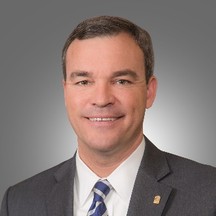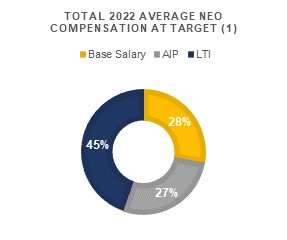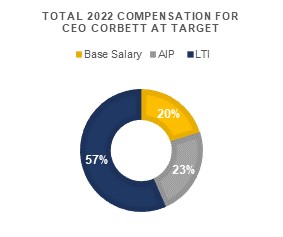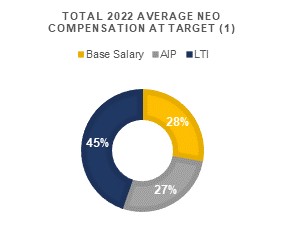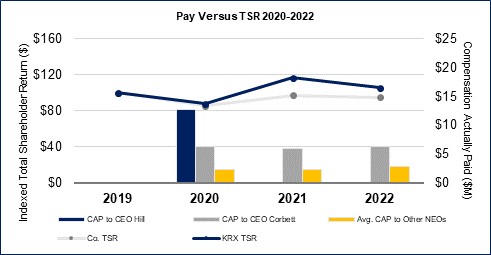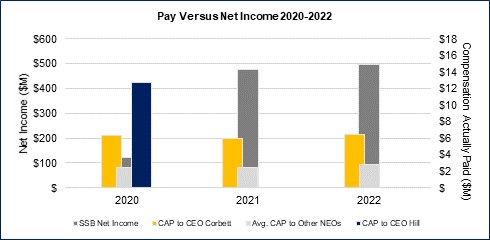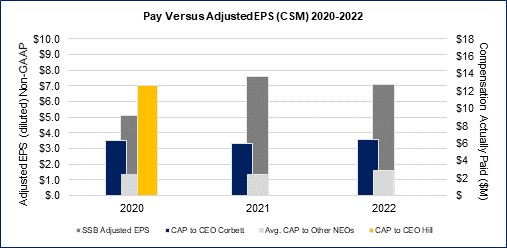VOTING AND OTHER INFORMATION
Who Can Vote. Only holders of record at the close of business on February 28, 2023 (the record date) will be entitled to notice of and to vote at our annual meeting. As of February 28, 2023, the following shares were outstanding and entitled to vote:
| |
Shares | Number of shares outstanding and entitled to vote |
Common Stock | 75,847,025 |
Each share of our common stock is entitled to one vote.
Voting Information for Registered Holders. If you are a registered holder, meaning that you hold our shares directly (not through a bank, broker, or other nominee), you may vote in person at our annual meeting or by submitting your proxy by:
| | |

| Internet | going to www.proxyvote.com and following the online instructions. You will need information from your Notice of Internet Availability or proxy card, as applicable, to submit your proxy |

| Phone | calling the phone number located on the top of your proxy card and following the voice prompts. You will need information from your proxy card to submit your proxy |

| Mail | (If you received your proxy materials by mail): marking your vote on your proxy card, signing your name exactly as it appears on your proxy card, dating your proxy card, and returning it in the envelope provided |
To be counted, your proxy must be received before the polls close at our annual meeting. All shares represented by valid proxies that we receive through this solicitation, and that are not revoked, will be voted according to your voting instructions. If you properly submit a proxy without giving specific voting instructions, your shares will be voted in accordance with our Board’s recommendations. If other matters properly come before our annual meeting, the proxies will vote on these matters.
You may revoke your proxy and change your vote at any time before the voting polls close at our annual meeting by submitting a properly executed proxy of a later date, a written notice of revocation (of your previously executed proxy) sent to our Corporate Secretary, or a vote cast in person at our annual meeting (however, attending the meeting without voting will not revoke a proxy).
Voting Information for Beneficial Owners. If you are a beneficial owner, meaning that you hold our stock in the name of a bank, broker, or other nominee (commonly referred to as holding shares in “street name”), you should have received these proxy materials from your bank, broker, or other nominee by mail or email with information on how to submit your voting instructions, including by:
| | |

| Internet | going to www.proxyvote.com and following the online instructions |

| Phone | calling the phone number located on the top of your voting instruction form (VIF) and following the voice prompts |

| Mail | (if you received your proxy materials by mail): marking your vote on your VIF, signing your name (exactly as it appears on the VIF), and dating, and returning your VIF in the envelope provided |
Voting by telephone and the Internet ends at 11:59 p.m. Eastern time on April 25, 2023. As a beneficial owner, if you do not provide voting instructions to your bank, broker, or other nominee, your shares will be treated as a “broker non-vote” with respect to Proposals 1, 2 and 3, and may be voted in the discretion of your bank, broker, or other nominee solely on Proposal 4 as described under “Votes Required” below. To change any of your previously provided voting instructions, or if you have questions about voting your shares, please contact your bank, broker, or other nominee directly.
You may revoke any voting instructions you provided by following the specific directions from your bank, broker, or other nominee to change or revoke any voting instructions you have already provided. Alternatively, you may vote your shares by ballot at the annual meeting if you obtain a legal proxy from your bank, broker, or other nominee and present it at the annual meeting.
Employee Voting. If you participate in Company’s 401(k) Plan or the Company’s Deferred Compensation Plan, (collectively, the Plan), and your Plan account has investments in shares of our common stock, you must provide voting instructions to the Plan trustee (the Trustee) (by the Internet, telephone, or proxy card) for your shares to be voted according to your instructions. Your shares cannot be voted unless you provide voting instructions to the Trustee. Your voting instructions to the Trustee will be held in strict confidence. The deadline to provide voting instructions for shares held in the Plan is April 23, 2023, at 11:59 p.m., Eastern time. If you are an employee and you hold shares in multiple accounts, you may receive one proxy card covering all the shares in your accounts. If you receive one proxy card covering all the shares in your accounts, you must provide voting instructions by April 23, 2023, at 11:59 p.m., Eastern time, to vote all your shares. After the applicable deadline, you will not be able to submit voting instructions or change prior voting instructions for any shares.


















